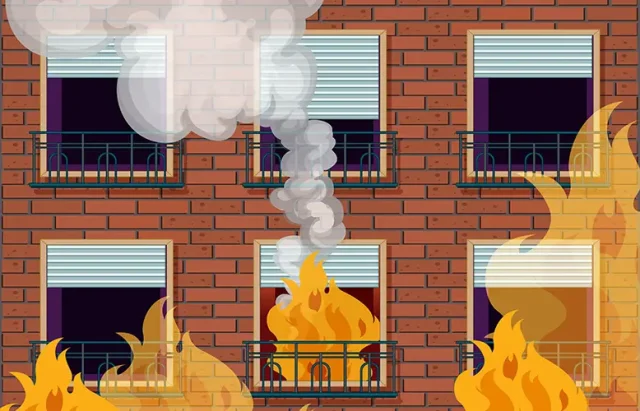
Fire can be one of the most devastating events a homeowner may face. Beyond the immediate destruction caused by flames, the lingering effects of smoke, soot, and water used to extinguish the fire can leave a home in disarray. While professional restoration services like fire restoration cleaning companies near me are often necessary for severe damage, many homeowners choose to take on part of the restoration process themselves. To do so effectively and safely, it’s crucial to understand the essential tools required for fire damage restoration. These tools not only aid in cleaning and repairing but also help protect health and prevent further deterioration of the property.
Protective Gear for Personal Safety
Before any restoration work begins, homeowners must prioritize personal safety. Fire-damaged environments can contain hazardous materials, airborne toxins, and unstable structures. Protective gear is essential to minimize exposure to harmful substances and prevent injury. Respirators with HEPA filters are vital for filtering out fine soot particles and toxic gases. Safety goggles protect the eyes from irritants and debris, while heavy-duty gloves shield hands from sharp objects and corrosive cleaning agents. Coveralls or disposable suits help prevent skin contact with contaminated surfaces. Without proper protective gear, homeowners risk serious health complications during the restoration process.
Air Purification and Ventilation Equipment
One of the first steps in fire damage restoration is improving indoor air quality. Smoke and soot particles can linger in the air long after the fire is extinguished, posing respiratory risks and contributing to unpleasant odors. Air purifiers equipped with HEPA filters are effective in capturing microscopic particles and allergens. Ozone generators and hydroxyl machines are commonly used to neutralize odors at the molecular level. These devices break down odor-causing compounds and help restore a fresh atmosphere within the home. Additionally, industrial fans and dehumidifiers assist in ventilating the space and removing excess moisture, which is often a byproduct of firefighting efforts.
Soot and Smoke Removal Tools
Soot is one of the most challenging residues to clean after a fire. It can be dry, oily, or protein-based, each requiring a different approach. Dry cleaning sponges, also known as chemical sponges, are specifically designed to lift soot from walls, ceilings, and other surfaces without smearing. These sponges are used dry and can be cut into smaller pieces for precision cleaning. For oily soot, degreasing agents and specialized cleaning solutions are necessary. These chemicals break down the residue and allow for easier removal. In cases where protein-based soot is present, such as from kitchen fires, enzymatic cleaners are often the most effective option.
Surface Cleaning and Restoration Supplies
Once soot and smoke residues are addressed, homeowners must focus on restoring surfaces to their original condition. Heavy-duty scrub brushes, microfiber cloths, and mops are essential for deep cleaning. Non-abrasive cleaners help preserve delicate surfaces while removing contaminants. For painted walls and ceilings, trisodium phosphate (TSP) is a popular cleaning agent that effectively removes smoke stains and prepares surfaces for repainting. Steam cleaners can be used on upholstery and carpets to extract embedded particles and refresh fabrics. In some cases, surfaces may need to be sealed with primers before repainting to prevent odors from resurfacing.
Odor Elimination Products
Lingering smoke odor is one of the most persistent challenges after a fire. Even after thorough cleaning, the smell can remain embedded in walls, furniture, and textiles. Odor neutralizers and encapsulating sprays are designed to trap and eliminate these smells rather than simply masking them. Thermal foggers disperse deodorizing agents into the air and penetrate porous materials, reaching areas that traditional cleaning methods cannot. These tools are particularly useful for large spaces and hard-to-access areas. Activated charcoal and baking soda can also be used as natural odor absorbers, placed strategically around the home to aid in the deodorization process.
Moisture Detection and Mold Prevention Tools
Water used to extinguish the fire can seep into walls, floors, and insulation, creating a breeding ground for mold. Moisture meters are essential for detecting hidden dampness and assessing the extent of water damage. Infrared cameras can help identify moisture pockets behind walls and under flooring. Once moisture is detected, dehumidifiers and air movers are used to dry out the affected areas. Mold inhibitors and antimicrobial sprays can be applied to prevent fungal growth and ensure a safe living environment. Addressing moisture promptly is critical to preventing secondary damage and health risks associated with mold exposure.
Restoration and Repair Equipment
In addition to cleaning, fire damage restoration often involves repairing or replacing damaged structures. Basic carpentry tools such as hammers, saws, drills, and screwdrivers are necessary for tasks like removing charred materials, installing new drywall, or repairing flooring. Paint supplies including brushes, rollers, and primers help restore the aesthetic appeal of the home. For homeowners with experience in electrical or plumbing work, specialized tools may be required to inspect and repair systems affected by the fire. However, it is advisable to consult professionals for complex repairs to ensure safety and compliance with building codes.
Conclusion
Fire damage restoration is a demanding process that requires more than just determination—it demands the right tools. From protective gear and air purifiers to soot removal sponges and moisture meters, each tool plays a vital role in restoring a home to its pre-fire condition. While some tasks may be manageable for homeowners, others require professional expertise. Understanding the function and importance of these tools empowers homeowners to make informed decisions, contribute effectively to the restoration process, and safeguard their property and health. With the proper equipment and a methodical approach, recovery from fire damage becomes not only possible but achievable. For expert care and rapid recovery after fire or water damage, trust the certified professionals at NYCrestoration.com to bring your property back to life.





